
Primarily known for his identity as a painter and his iconic paintings, Osman Hamdi Bey stands out as one of the pioneers in this field among Turks, being considered the first Turkish archaeologist. He conducted excavation works in various regions under the rule of the Ottoman Empire, laying the foundations of archaeological science in the Ottoman era. Furthermore, he is acknowledged as the founder of contemporary Turkish museology, having established and served as the director of the Istanbul Archaeology Museum. Osman Hamdi Bey, who marked a turning point in Turkish museology history, is also the founder of the present-day Mimar Sinan Fine Arts University, holding great importance in various aspects of our history.
Osman Hamdi Bey was born on December 30, 1842, in Istanbul. His father, Ibrahim Edhem Pasha, a prominent statesman of the Tanzimat era, served as one of the first museum directors of the Ottoman Empire, playing a crucial role in shaping Osman Hamdi Bey's interest in art and culture.
Osman Hamdi Bey began his education in Istanbul and later traveled to Paris to pursue his artistic training. During his years in the artistic centers of France, he took lessons from prominent painters and artists of the time, enhancing his skills in painting. These developments enriched his artistic understanding and contributed significantly to the development of Turkish art as he completed his education in the Western style.
After his years in Paris, Osman Hamdi Bey returned to Istanbul and served in various government institutions. While fulfilling bureaucratic responsibilities, he wrote two theater plays, "İki Karpuz Bir Koltuğa Sığmaz" (1871) and "Uçurtma" (1872). Thus, he contributed to the functioning of the state while continuing his efforts to engage society in artistic life through his art.
In 1881, upon the personal order of the Sultan, he was appointed as the director of the Imperial Museum (Müze-i Hümayun). He revised the existing "Asar-ı Atika Nizamnamesi" of 1874, preventing foreign archaeologists from smuggling artifacts excavated in Ottoman territories. Osman Hamdi Bey, aiming to gather every artwork with historical significance, transformed the Imperial Museum into the Istanbul Archaeology Museum.
Osman Hamdi Bey initiated the first scientific excavations during his
tenure as the museum director. His recognition as the first Turkish
archaeologist stems from personally overseeing some of these excavations. The
Alexander Sarcophagus, discovered in the royal necropolis excavations in Sidon
in 1877, is considered a masterpiece in the world of archaeology.
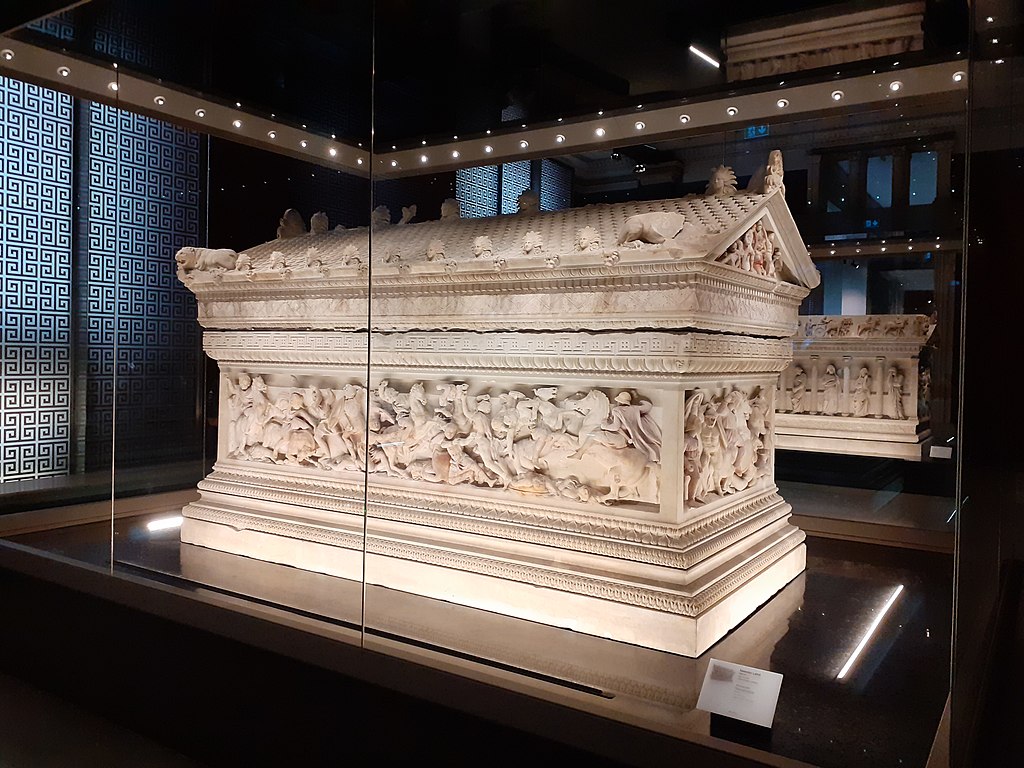
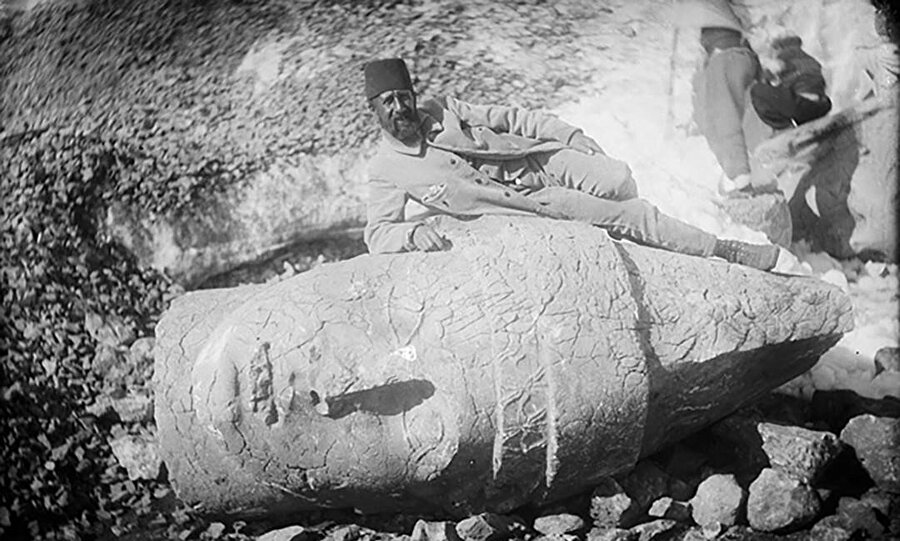
The recording, restoration, proper preservation, and creating space for
new discoveries were the objectives that laid the foundations for the Imperial
Museum building, known today as the Archaeology Museum. The project, designed
by Architect Vallaury in 1882, was gradually constructed and completed. This
structure significantly contributes to the transmission of the rich cultural
heritage of the Ottoman Empire to future generations.
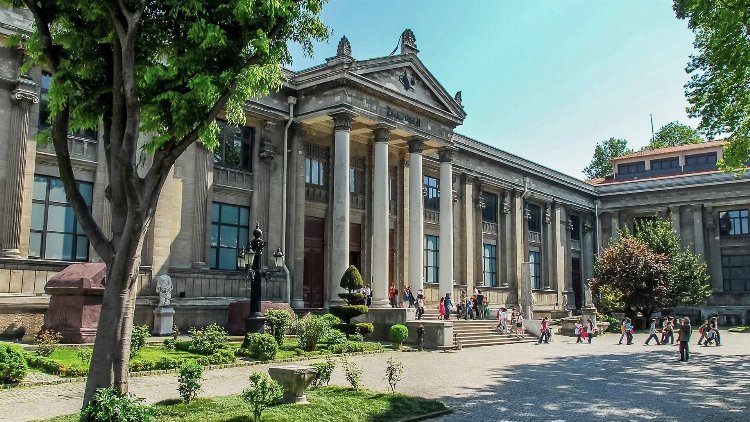
In 1882, Osman Hamdi Bey was appointed as the director of the Sanâyi-i Nefîse School by Sultan Abdulhamid II. He opened the Old Oriental Works Building of the Istanbul Archaeology Museum for education under the name of Sanâyi-i Nefîse School. Sanâyi-i Nefîse School was the first fine arts school of the Ottoman Empire, later renamed the Academy of Fine Arts in 1928, and has continued its education under the name Mimar Sinan University since 1982.
Throughout this entire process, Osman Hamdi Bey, while engaging in various archaeological studies and governmental duties, never ceased to paint, leaving behind significant works in the history of art.
Osman Hamdi Bey, establishing a significant theme in his art
centered around Ottoman heritage, blends the richness of the past and cultural
values with a modern artistic perspective. While exploring this theme, he draws
inspiration from the history, traditions, and daily life of the Ottoman Empire
through symbols and details frequently employed in his paintings. One of Osman
Hamdi Bey's most well-known works, "The Tortoise Trainer," reflects
the palace life of the Ottoman era. The painting revolves around the figure of
a tortoise trainer and captures attention with the dazzling costumes and rich
color palette of the Ottoman period. This piece emphasizes the artist's
interest in the daily life of the Ottoman Empire and his meticulous attention
to detail. Additionally, it is believed that this artwork signifies the
challenges faced by the Ottoman society undergoing Westernization.
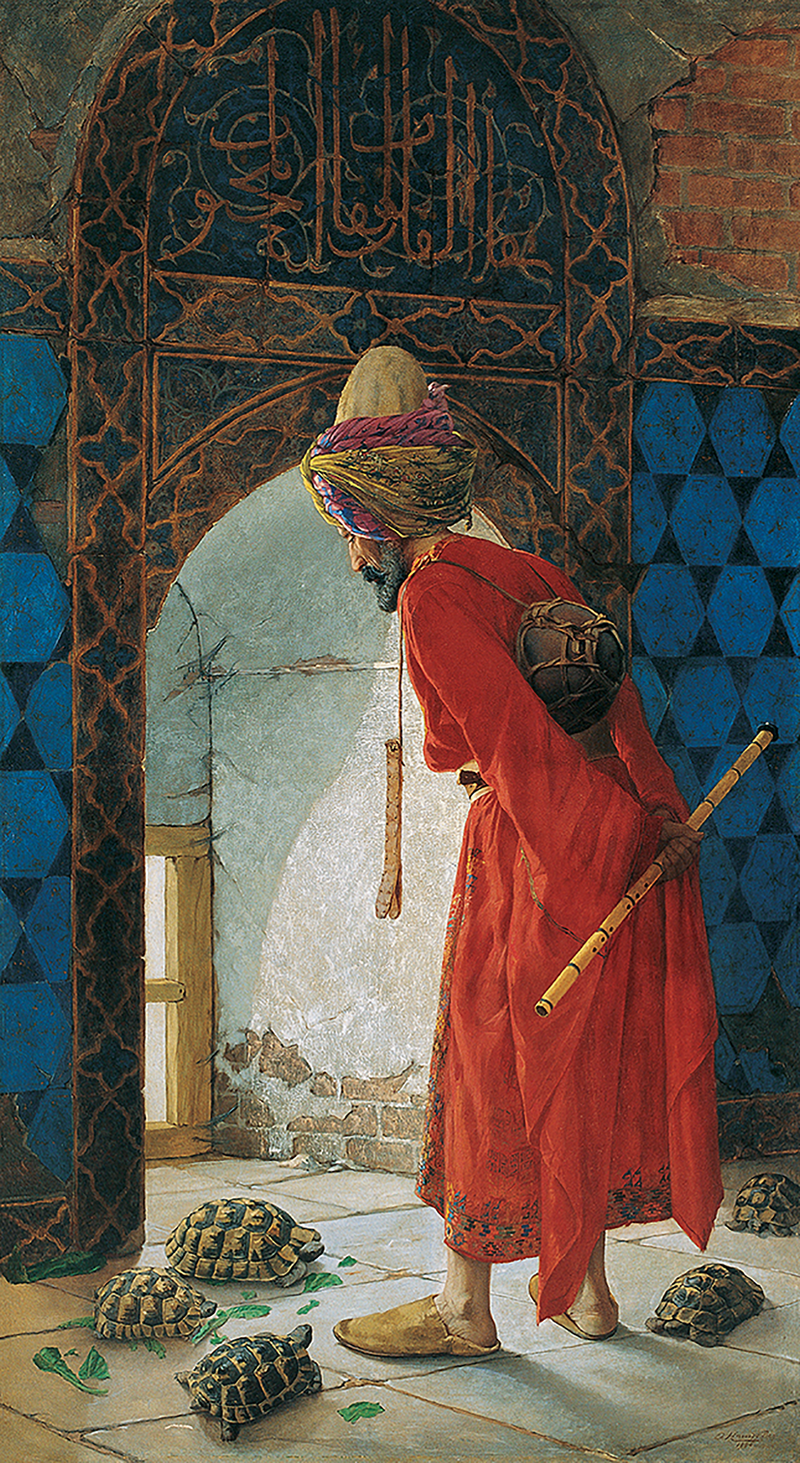
Another significant work by Osman Hamdi Bey associated with
Ottoman heritage is "The Carpet Seller." In this painting, the
vibrant colors and attention-grabbing details depict the market atmosphere of
the Ottoman era. The patterns of the carpets, the texture of the fabrics, and
the attire of the figures reflect the artist's profound attachment to the
aesthetic values of the Ottoman Empire, affirming his interest in everyday
life.
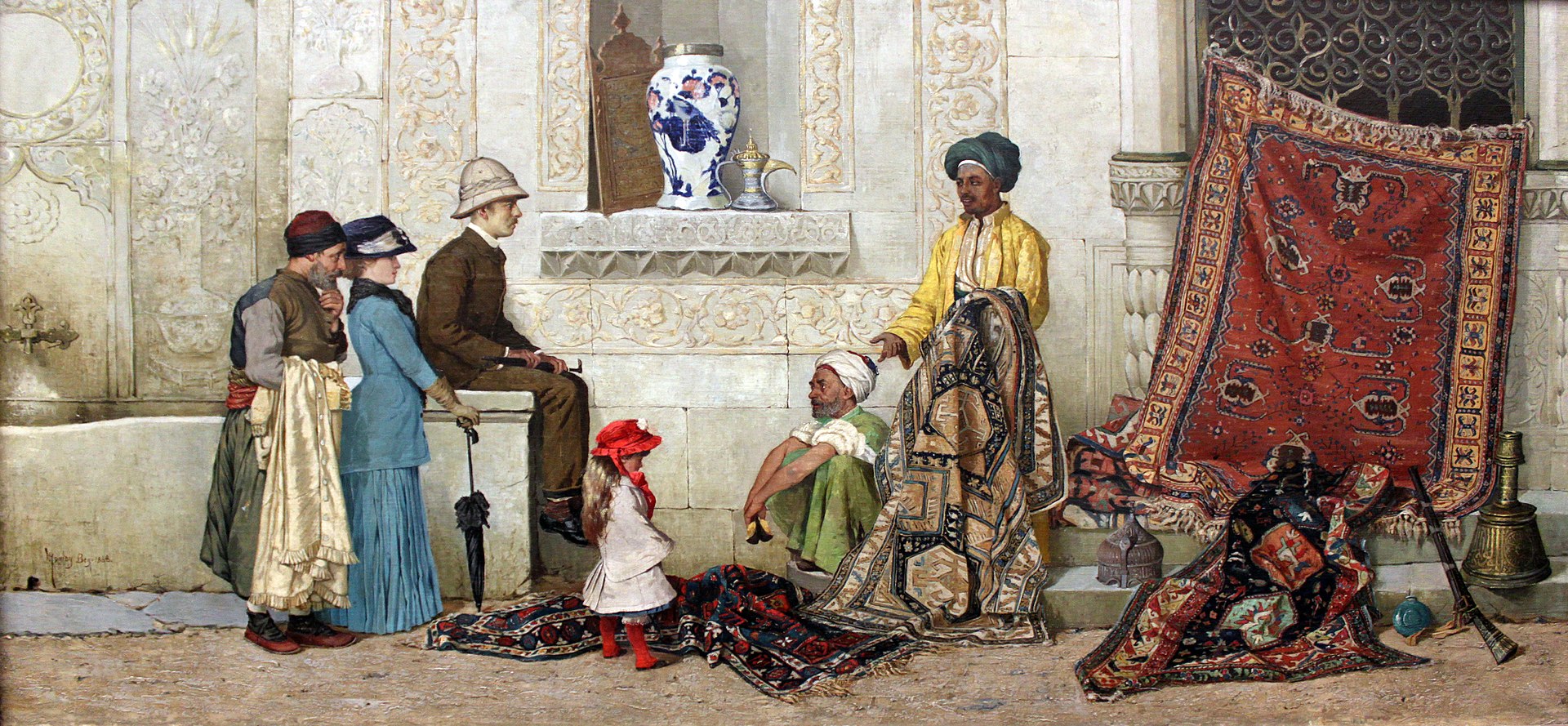
Another frequently encountered theme in Osman Hamdi Bey's works is
Ottoman architecture. His painting titled "Mihrap" is an example that
reflects the elegance and intricacy of Ottoman mosque architecture. By
portraying the nuances of Ottoman architecture in his paintings, the artist
provides the viewer with an opportunity to experience the enchanting atmosphere
of the past.
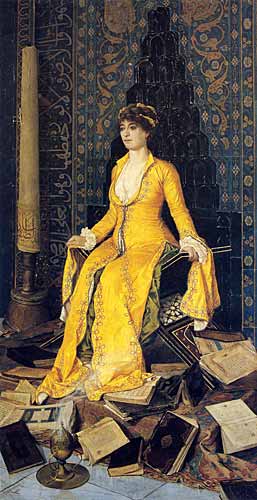
Osman Hamdi Bey's works reflect his artistic philosophy woven with emotional depth, technical mastery, and cultural richness. He presents Ottoman culture not merely as a historical memory but as a living work of art. The situations and details in Osman Hamdi Bey's art serve as a bridge between the past and the future, reminding the audience of the continuity and richness of culture.
Osman Hamdi Bey, with his indelible mark on
both the art and culture realms, remains an unforgettable figure in Turkish
history. His artistic creations and pioneering role in museum establishment
continue to contribute significantly to the development of Turkish art and
culture even today.
https://www.gzt.com/arkitekt/ilk-turk-arkeolog-osman-hamdi-bey-3561495
https://tr.wikipedia.org/wiki/Osman_Hamdi_Bey
https://www.kulturportali.gov.tr/portal/osman-hamdi-bey